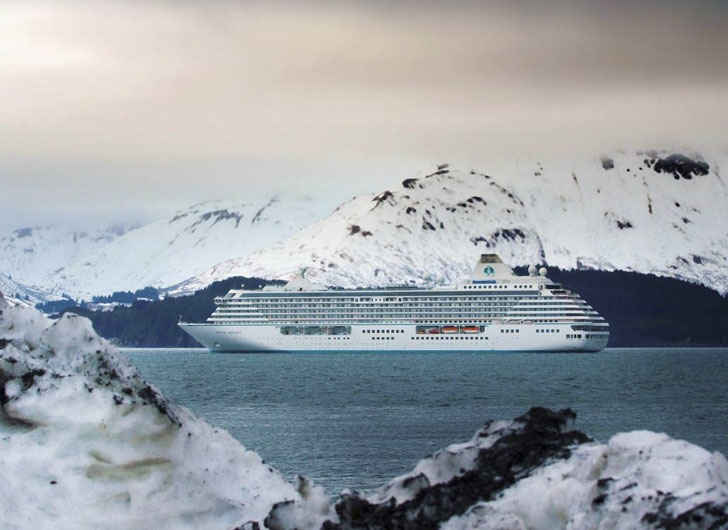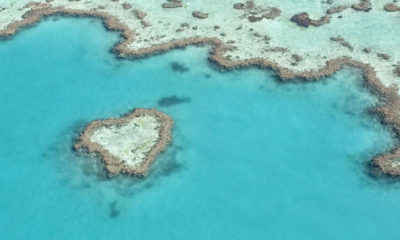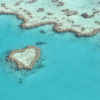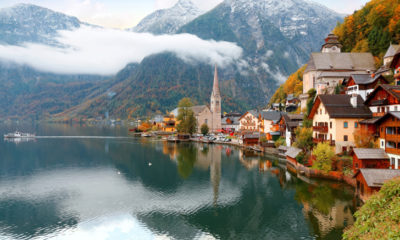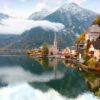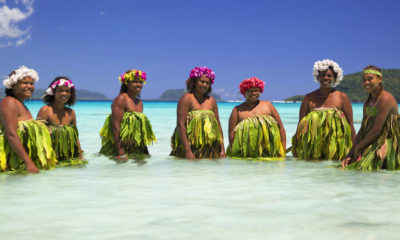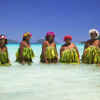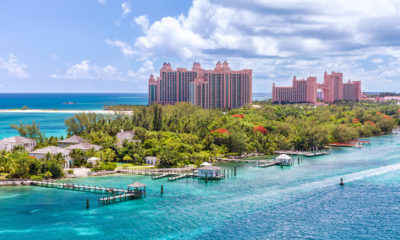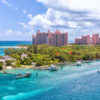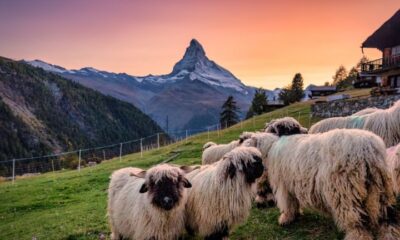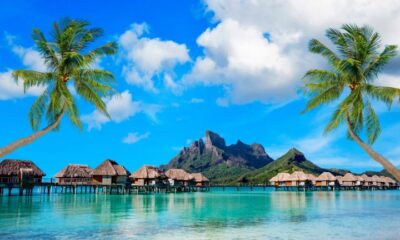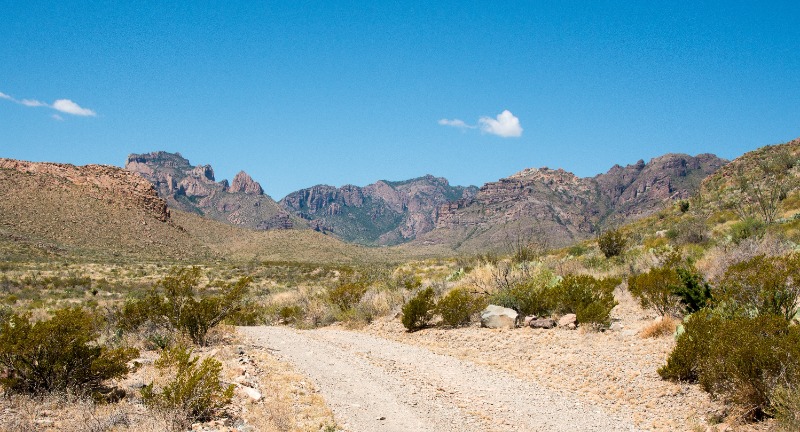
Shutterstock
In a world where crowds and convenience often dominate travel plans, some adventurers crave the serenity of the untouched wilderness. The United States’ most remote national parks offer an escape into pristine landscapes where silence reigns, and nature thrives undisturbed. With minimal road access, sparse facilities, and breathtaking beauty, these parks test your grit and reward your spirit in equal measure.
Whether you’re paddling through tranquil waters or trekking into the heart of the wilderness, these 24 remote national parks redefine what it means to truly get away from it all.
Gates of the Arctic National Park
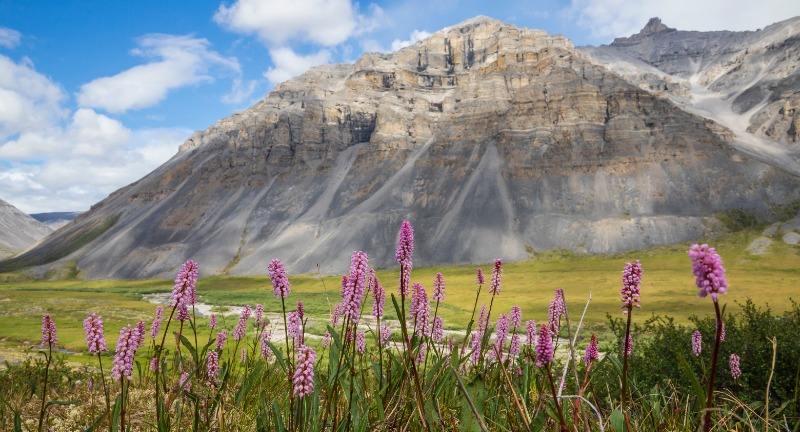
Shutterstock
Gates of the Arctic is the ultimate frontier for adventurers seeking an untouched wilderness. Spanning over eight million acres above the Arctic Circle, this park has no roads, trails, or visitor centers, emphasizing its pristine and untamed character. Visitors rely on bush planes to reach its rugged peaks, glacier-fed rivers, and tundra teeming with wildlife like caribou and wolves. This extreme remoteness ensures you’ll experience nature as it existed long before human interference.
Kobuk Valley National Park
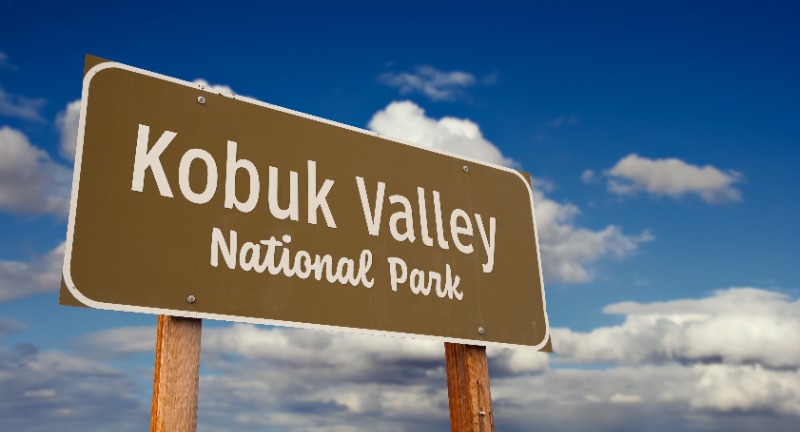
Shutterstock
Home to the Great Kobuk Sand Dunes, this park is a surprising blend of Arctic tundra and desert-like landscapes. Each year, thousands of caribou migrate through the park, offering visitors a rare spectacle in this roadless expanse. Accessible only by air, the park’s remoteness guarantees a serene escape into a land of solitude and surreal beauty. The dunes, some of the largest in the Arctic, rise dramatically from the surrounding wilderness, creating an awe-inspiring contrast.
Isle Royale National Park
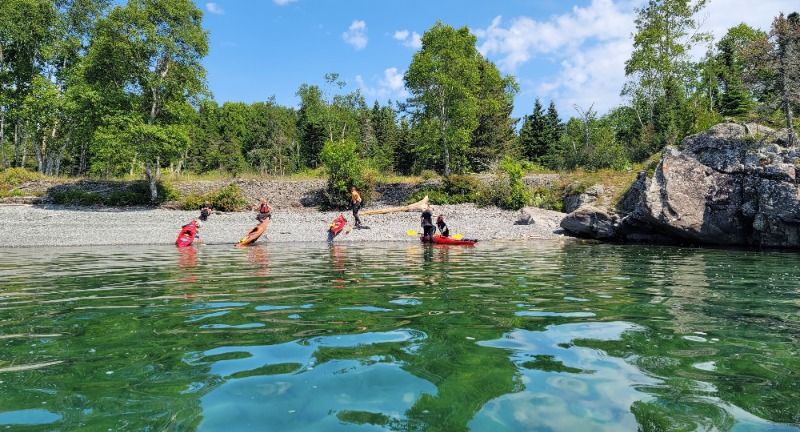
Shutterstock
A rugged island in Lake Superior, Isle Royale is a haven for backpackers, kayakers, and wildlife enthusiasts. Accessible only by ferry or seaplane, the park’s isolation has fostered a unique ecosystem, including its famous wolf and moose populations. Dense forests, pristine lakes, and rocky shorelines provide endless opportunities for exploration and solitude. It’s the perfect destination for those who want to disconnect and immerse themselves in nature’s tranquility.
Dry Tortugas National Park
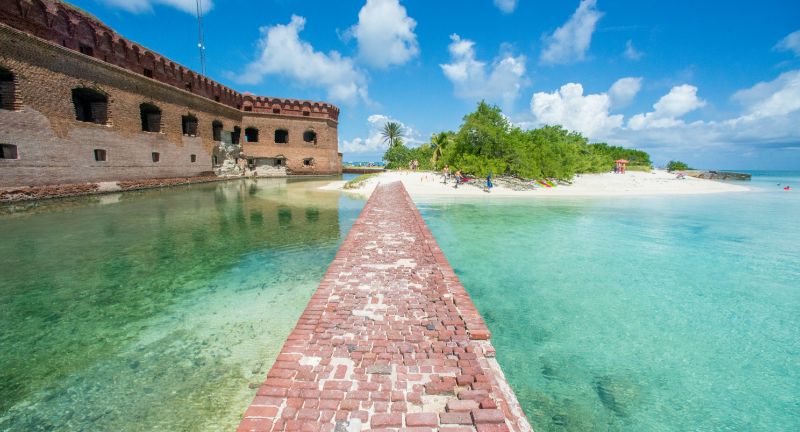
Shutterstock
Located 70 miles off the coast of Key West, Dry Tortugas is a tropical paradise accessible only by boat or seaplane. The park’s centerpiece is Fort Jefferson, a massive 19th-century fortress surrounded by crystal-clear waters and vibrant coral reefs. Snorkeling, birdwatching, and exploring the historic fort are popular activities in this remote marine sanctuary. The park’s isolation ensures uncrowded experiences in one of the most unique settings in the National Park System.
Katmai National Park
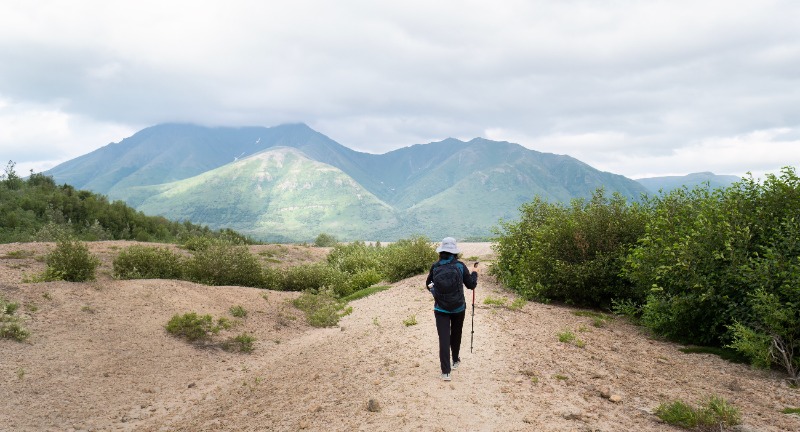
Shutterstock
Katmai is renowned for its breathtaking Valley of Ten Thousand Smokes, a volcanic landscape left by a massive eruption in 1912. The park is also famous for its brown bears, which congregate at Brooks Falls to catch salmon in a mesmerizing display of raw nature. With no roads leading in, visitors rely on floatplanes to access this wild Alaskan gem. The remote setting makes it a paradise for photographers and wilderness lovers.
Wrangell-St. Elias National Park
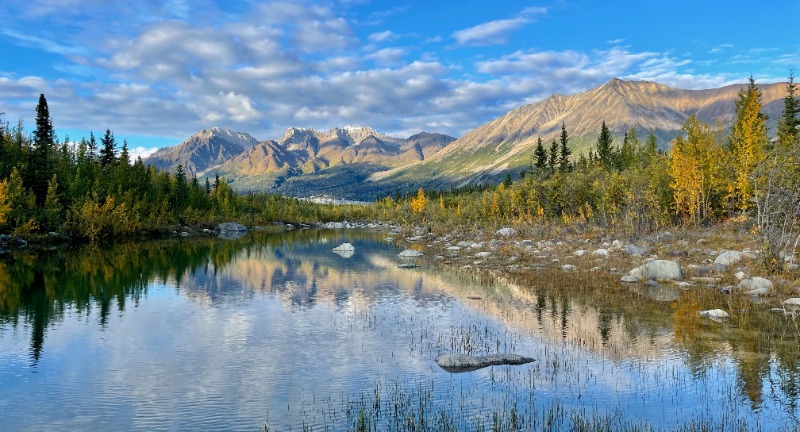
Shutterstock
As the largest national park in the U.S., Wrangell-St. Elias is a land of superlatives, encompassing towering peaks, massive glaciers, and unspoiled valleys. Its sheer size and rugged terrain mean it remains largely untouched, with few visitors venturing deep into its interior. Backcountry adventurers are rewarded with pristine wilderness and the chance to encounter grizzly bears, moose, and caribou. This park epitomizes the scale and grandeur of Alaska’s wilderness.
North Cascades National Park
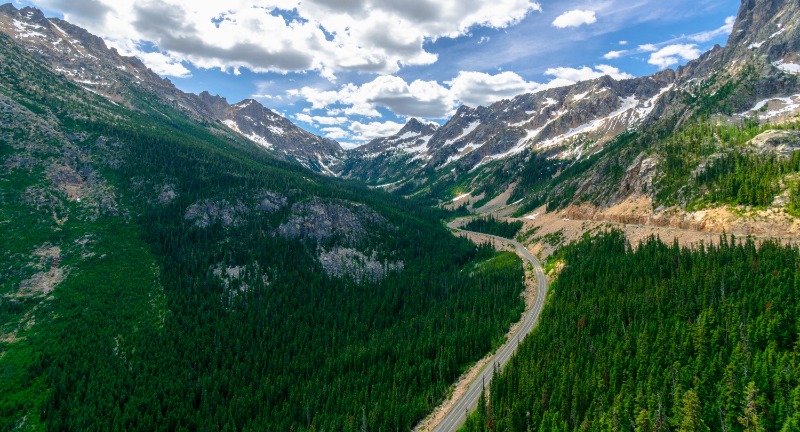
Shutterstock
Known as the “American Alps,” North Cascades boasts jagged peaks, over 300 glaciers, and dense alpine forests. Despite its proximity to Seattle, the park remains remote due to its rugged terrain and limited road access. Hikers and climbers will find some of the most challenging and rewarding trails in the country. The park’s dramatic scenery and abundant wildlife make it a hidden treasure for outdoor enthusiasts.
Great Basin National Park
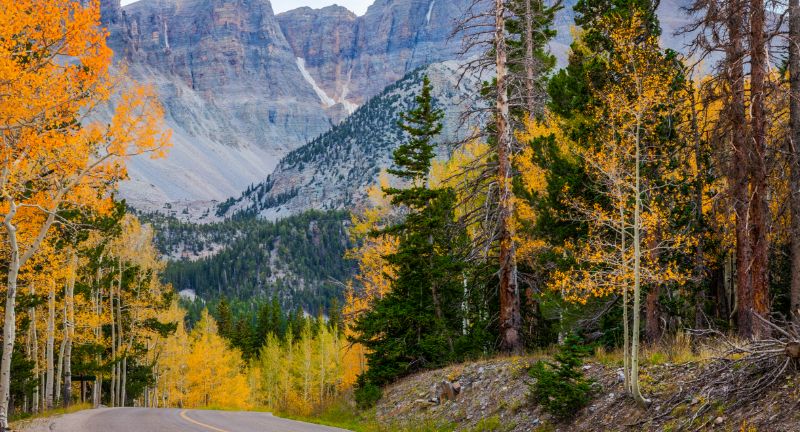
Shutterstock
Nestled in Nevada’s high desert, Great Basin is a park of contrasts, featuring ancient bristlecone pines, subterranean Lehman Caves, and the towering Wheeler Peak. Its remote location means fewer crowds, making it an ideal destination for stargazers and solitude seekers. The park’s dark skies are among the clearest in the country, offering unparalleled views of the Milky Way. Hiking through the park reveals both stark desert landscapes and lush alpine meadows.
Lake Clark National Park
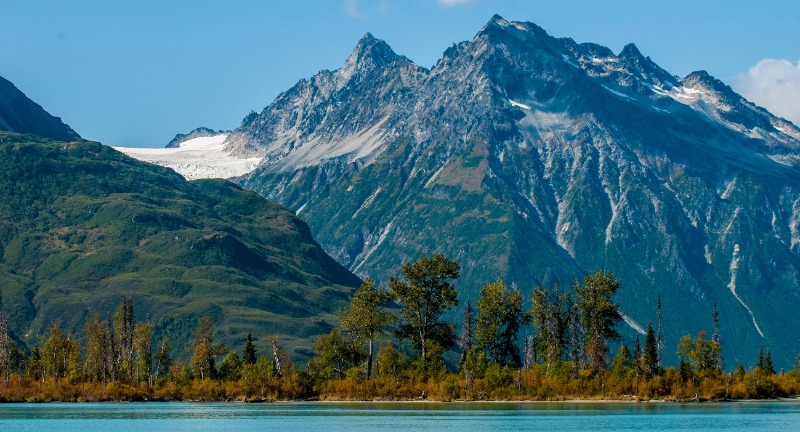
Shutterstock
Lake Clark’s stunning combination of active volcanoes, turquoise lakes, and abundant wildlife creates an unforgettable wilderness experience. With no roads leading in, the park is accessible only by plane, ensuring its pristine landscapes remain untouched by development. Adventurers can fish in salmon-filled rivers, hike along rugged trails, or kayak through glacial waters. The park’s remoteness guarantees an unparalleled sense of solitude and wonder.
Guadalupe Mountains National Park
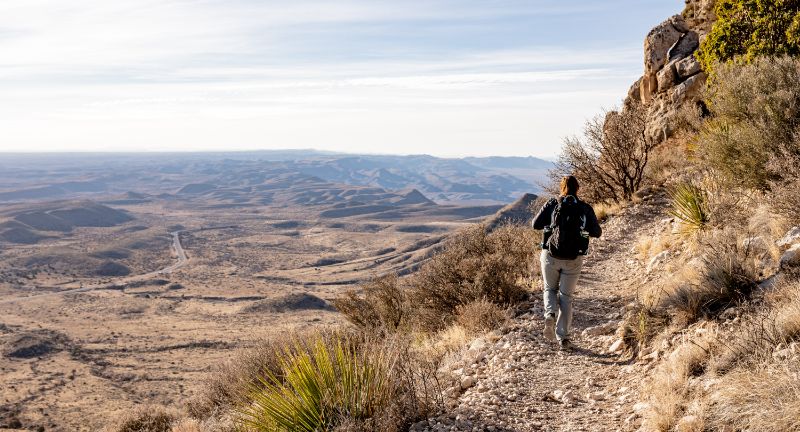
Shutterstock
This West Texas gem is home to the state’s highest peak, Guadalupe Peak, as well as the stunning El Capitan escarpment. The park’s rugged desert landscapes, including fossilized reefs from an ancient sea, provide a unique window into Earth’s geological history. Hiking enthusiasts will enjoy its challenging trails, which offer panoramic views of the surrounding wilderness. Far from any major cities, the park offers a peaceful escape into nature.
Big Bend National Park
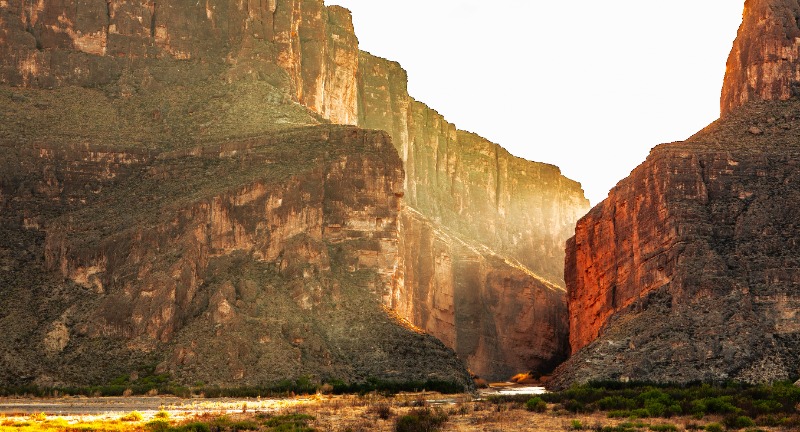
Shutterstock
Situated along the Rio Grande in West Texas, Big Bend offers vast desert landscapes, rugged canyons, and a surprising diversity of flora and fauna. Its remote location makes it one of the least-visited national parks, perfect for those seeking solitude. Hiking trails lead to stunning views of desert vistas, while the river provides opportunities for kayaking and rafting. The park’s night skies, free from light pollution, are a stargazer’s paradise.
Canyonlands National Park
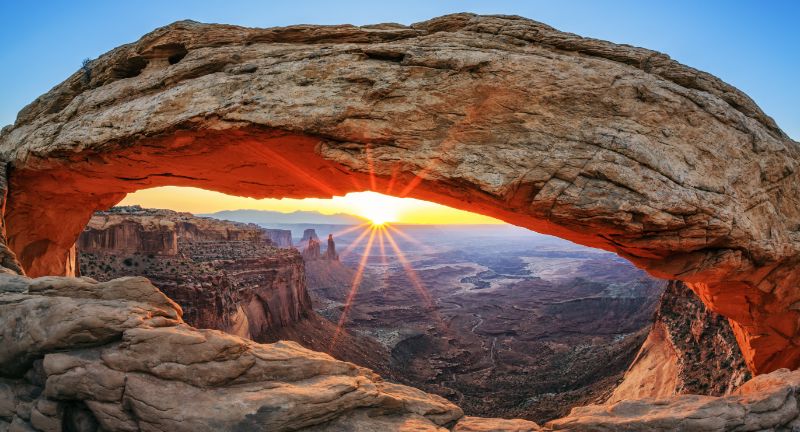
Shutterstock
Canyonlands is divided into distinct districts, but the Maze is the most remote and challenging to access. This labyrinthine desert wilderness offers a rugged landscape of sandstone canyons, towering mesas, and ancient petroglyphs. Reaching the Maze requires long drives on unpaved roads and self-sufficiency, making it a haven for adventurous spirits. The breathtaking isolation ensures a connection to nature unlike anywhere else.
Congaree National Park
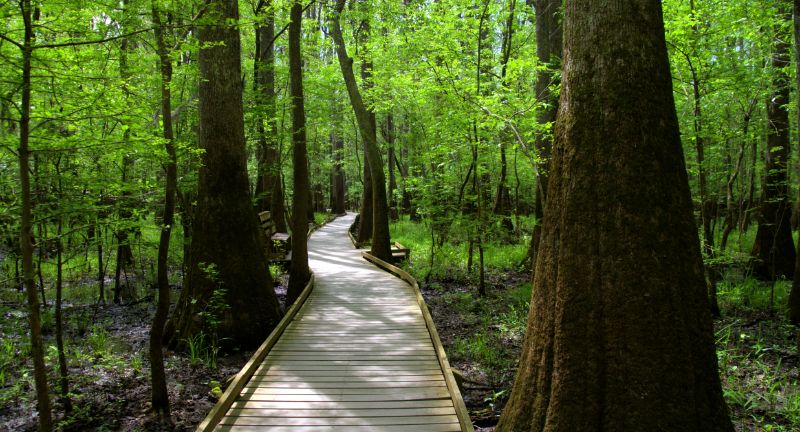
Shutterstock
Congaree’s floodplain forest, featuring some of the tallest trees in the eastern U.S., feels like stepping back in time. Though smaller and less frequented, the park’s waterways and boardwalk trails immerse visitors in a unique, biodiverse ecosystem. Paddling through the swampy forest is a serene experience, with the sounds of nature surrounding you. Its quiet atmosphere and secluded trails make it a hidden treasure.
Voyageurs National Park
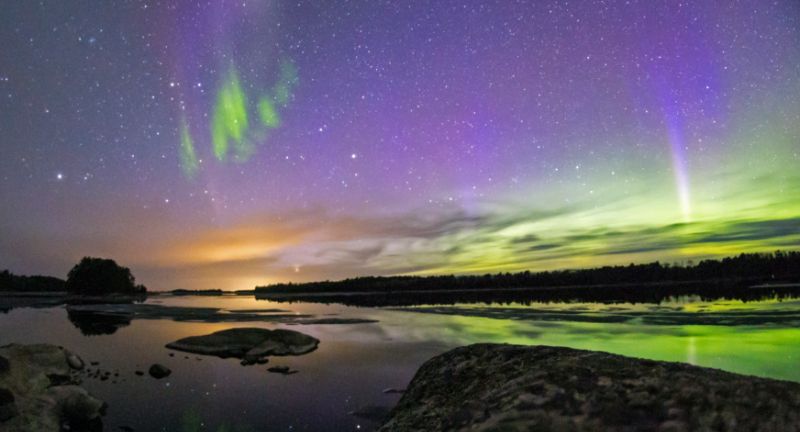
Shutterstock
A watery wonderland of interconnected lakes and islands, Voyageurs is accessible primarily by boat. The park’s remote location near the Canadian border ensures tranquility and solitude. Canoeing, kayaking, and houseboating are popular ways to explore its pristine waters, home to loons, otters, and bald eagles. Camping on secluded islands provides a true wilderness experience.
Black Canyon of the Gunnison National Park
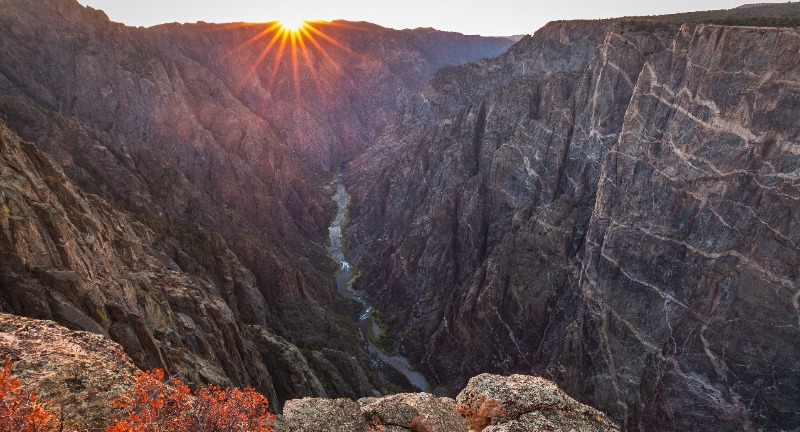
Shutterstock
This dramatic canyon’s sheer walls and narrow chasm create one of the most striking landscapes in the U.S. Far less visited than the Grand Canyon, Black Canyon offers peaceful hiking trails and incredible viewpoints. Adventurous visitors can descend into the canyon’s depths for rock climbing or fishing along the Gunnison River. Its remoteness ensures a tranquil escape amid breathtaking scenery.
Biscayne National Park
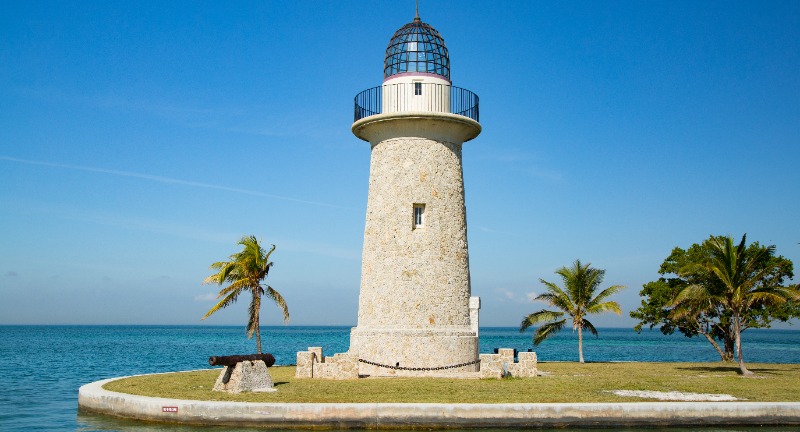
Shutterstock
Covering 95% water, Biscayne protects a vibrant marine ecosystem of coral reefs, mangroves, and turquoise waters. The park’s isolation, accessible only by boat, keeps its natural beauty unspoiled. Visitors can snorkel or scuba dive to see colorful fish and shipwrecks, or kayak through mangrove channels. This aquatic paradise offers a serene retreat far from the mainland.
Carlsbad Caverns National Park
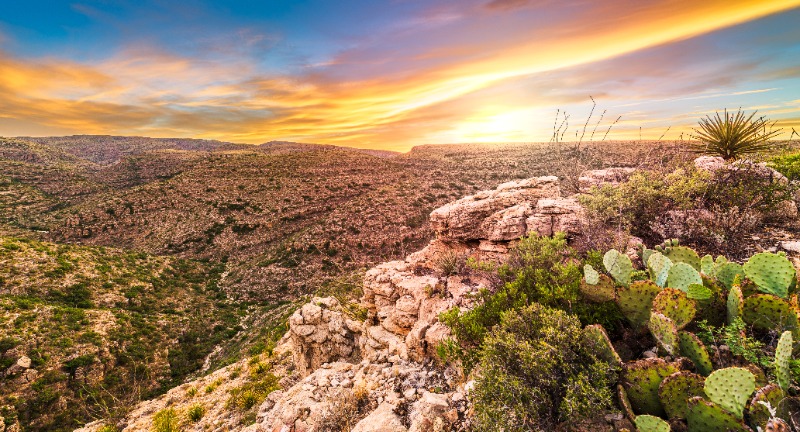
Shutterstock
While the caverns draw some attention, the surrounding Chihuahuan Desert is a remote and quiet escape. Visitors can explore underground wonders like the Big Room, a massive limestone chamber filled with stunning formations. Above ground, hiking trails lead to rugged desert landscapes and opportunities for wildlife viewing. The remoteness of the park ensures a peaceful experience both above and below ground.
Capitol Reef National Park
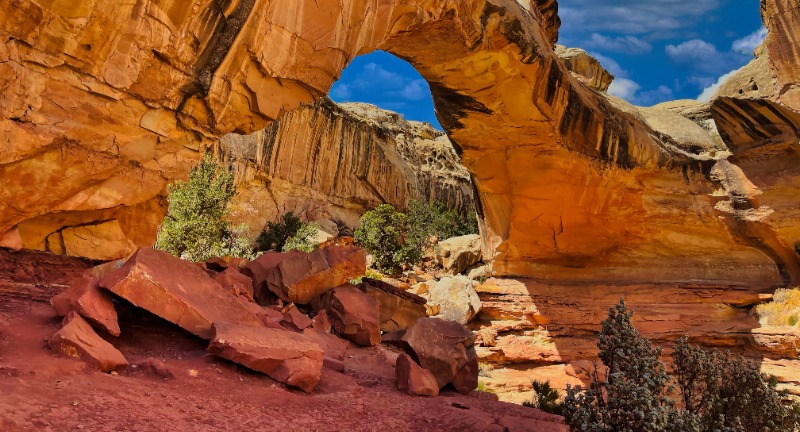
Shutterstock
Capitol Reef is a hidden gem in Utah’s red rock country, known for its Waterpocket Fold, a dramatic geological formation. Its remote location means fewer crowds, making it ideal for those seeking solitude in the desert. Scenic drives and hikes reveal colorful cliffs, natural arches, and ancient petroglyphs. The park’s orchard-lined Fremont River valley adds a surprising touch of greenery to the arid landscape.
Denali National Park
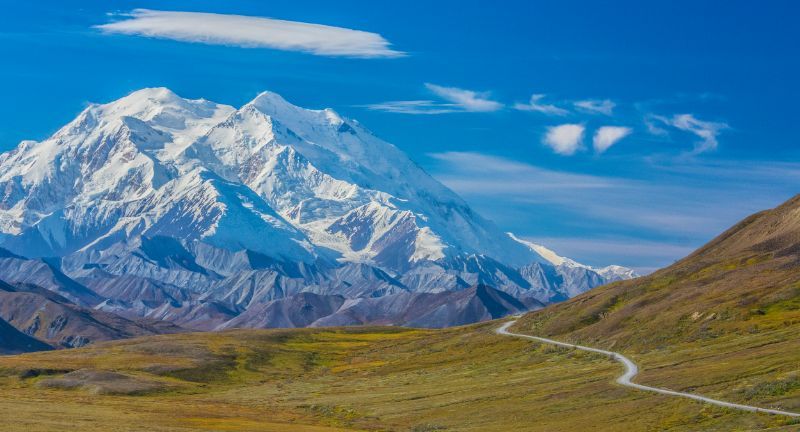
Shutterstock
Home to North America’s tallest peak, Denali National Park is a land of extremes, from vast tundra to towering mountains. With just one main road and limited vehicle access, most of the park remains a wilderness accessible only by foot or air. Wildlife like grizzly bears, moose, and wolves roam freely in this unspoiled environment. Its remoteness ensures visitors can experience true Alaskan wilderness.
Haleakalā National Park

Shutterstock
Haleakalā’s summit feels like another planet, with its volcanic crater offering otherworldly views of red and black cinder cones. The park’s remoteness and high elevation make it an excellent spot for stargazing and sunrise viewing. Visitors can also explore lush tropical trails leading to waterfalls in the park’s lower regions. The contrast between its volcanic and rainforest ecosystems creates a unique and isolated experience.
Theodore Roosevelt National Park
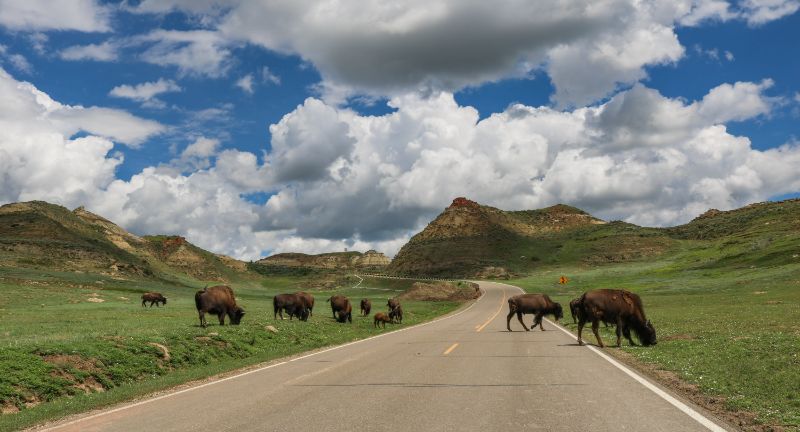
Shutterstock
This park honors Theodore Roosevelt’s conservation legacy with its rolling badlands, open prairies, and diverse wildlife. Its remote location in western North Dakota ensures a peaceful atmosphere, free from crowds. Scenic drives and hiking trails lead to encounters with bison, wild horses, and prairie dogs. The park’s rugged beauty inspired Roosevelt’s passion for preserving America’s natural heritage.
Petrified Forest National Park
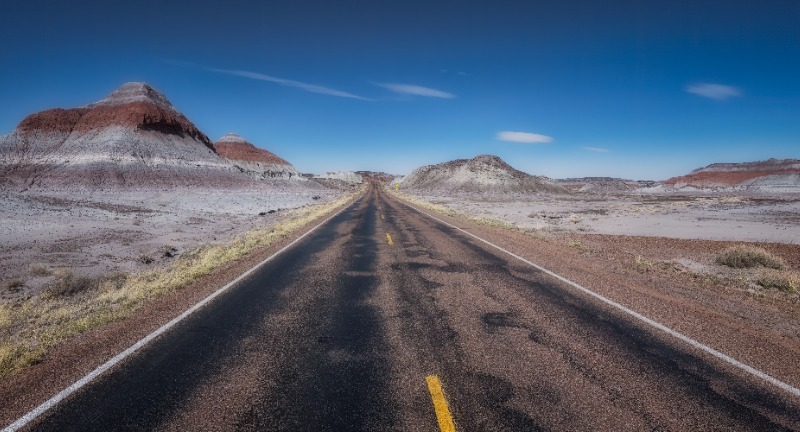
Shutterstock
Petrified Forest features colorful badlands and ancient fossilized trees, offering a window into Earth’s prehistoric past. The park’s remote location and relatively low visitation make it an ideal spot for quiet exploration. Visitors can hike through desert trails, uncover ancient petroglyphs, and marvel at the vibrant petrified wood. Its surreal landscapes feel like stepping into another era.
Kenai Fjords National Park
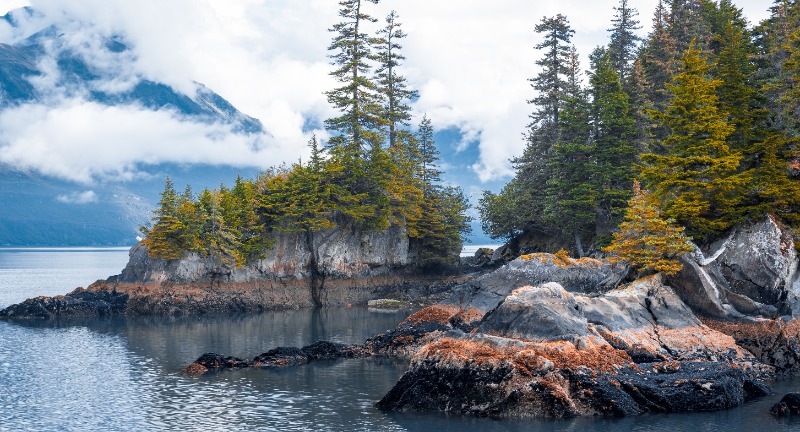
Shutterstock
Known for its tidewater glaciers and abundant marine wildlife, Kenai Fjords is a breathtaking yet remote destination. Most visitors arrive by boat, exploring icy fjords teeming with seals, whales, and puffins. Hiking the Harding Icefield Trail offers stunning views of the vast glacier-covered wilderness. Its remote setting ensures an intimate encounter with Alaska’s dramatic coastal landscapes.
Mesa Verde National Park
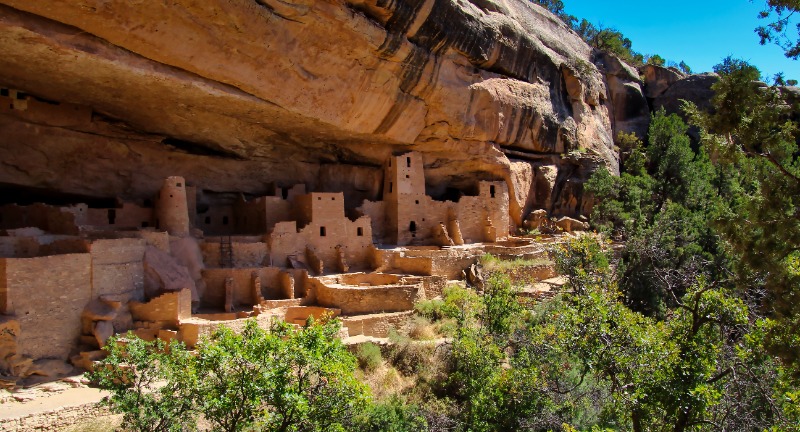
Shutterstock
Mesa Verde preserves the incredible cliff dwellings of the Ancestral Puebloans, set within rugged canyons and mesas. The park’s remote location in southwestern Colorado makes it a quiet refuge for history and nature enthusiasts. Guided tours of the dwellings, like Cliff Palace, offer a glimpse into ancient life, while hiking trails lead to stunning vistas. Its blend of cultural heritage and natural beauty makes it a uniquely remote treasure.
Conclusion
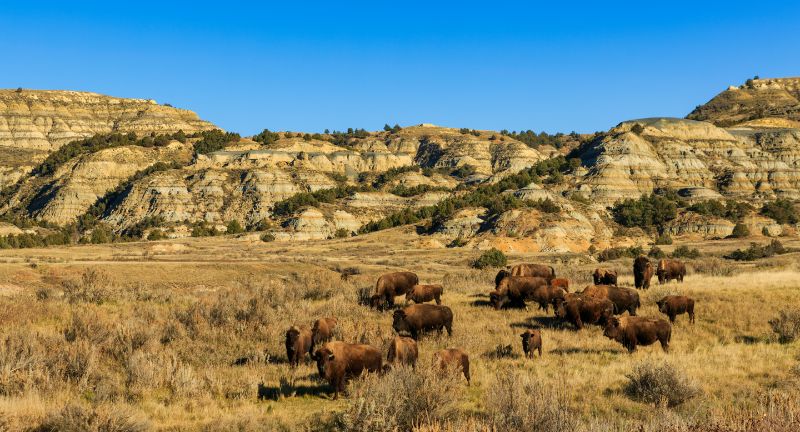
Shutterstock
The most remote national parks in the United States are more than just destinations, they are transformative journeys into the heart of nature’s untouched beauty. These parks invite you to step away from the familiar, embrace solitude, and experience the profound stillness of the wild. While reaching them may require extra effort, the rewards are unparalleled: serenity, awe, and a deep connection to the natural world. So pack your sense of adventure, leave the crowds behind, and discover the magic waiting in these hidden corners of America.


























